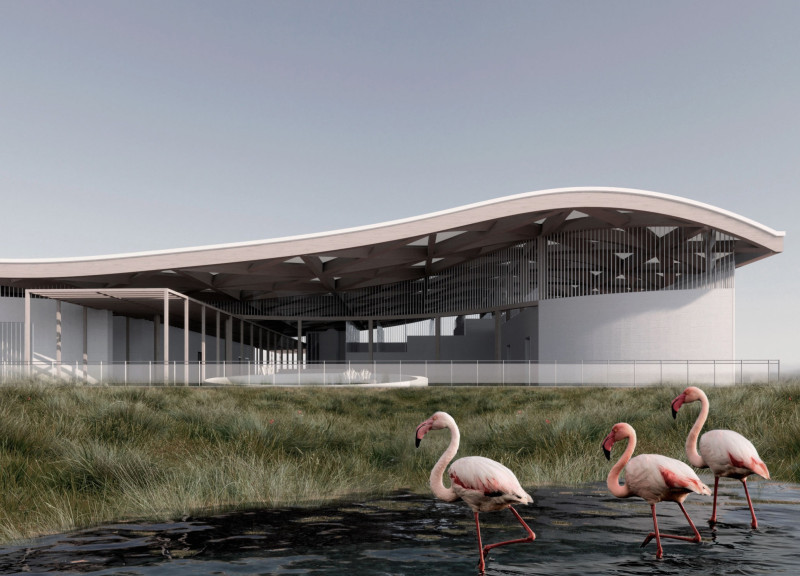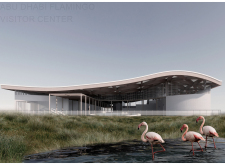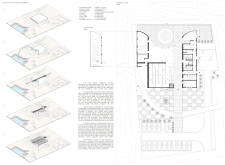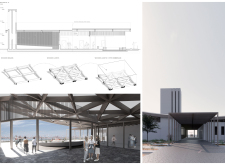5 key facts about this project
Fluid Architectural Form
The architectural design features a fluid, wave-like roof that mimics the movement of water and the elegance of flamingos. This distinctive form is not only visually appealing but also serves practical functions, such as enhancing natural ventilation and allowing abundant natural light into the interior spaces. The building's layout is organized into distinct areas, including exhibition spaces, educational zones, and dining facilities, which encourage exploration and engagement with both the center and its surroundings.
The integration of natural materials contributes to the overall aesthetic and functionality of the Visitor Center. The structure utilizes materials such as ETFE membranes, wood, block masonry, concrete, and metal profiles. The ETFE roof offers high efficiency, lightweight properties, and self-cleaning capabilities, while the use of wood introduces a natural warmth to the interiors. This careful selection of materials not only aligns with sustainable practices but also reinforces the connection to the surrounding natural environment.
Innovative Sustainable Design
The Visitor Center adopts several sustainable architectural strategies. Natural ventilation is a key design feature, utilizing windcatchers to promote airflow and reduce reliance on mechanical cooling systems. The building's orientation and large glazed areas maximize views of the wetlands, allowing visitors to remain immersed in the ecological setting. By prioritizing sustainability, the design minimizes energy consumption and enhances the overall visitor experience.
Additionally, the center’s educational exhibits and interactive features aim to inform the public about the significance of the flamingo population and the importance of wetland conservation. Through these elements, the Visitor Center is positioned not just as a recreational site but as a hub for ecological education and community engagement.
Explore the architectural plans and sections for the Abu Dhabi Flamingo Visitor Center for further insights into its design strategies and unique architectural elements. Understanding the architectural ideas and intentions behind this project provides a clearer picture of how it reflects contemporary architectural practices while serving an important ecological function.


























